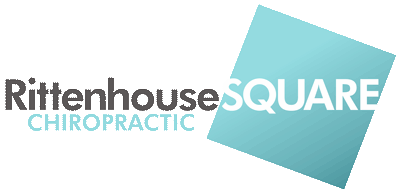Chiropractic care, known for its focus on spinal alignment and musculoskeletal health, synergizes well with Softwave Therapy, a treatment that uses shockwave technology to stimulate tissue repair and pain relief. Together, these treatments offer a holistic approach to treating a variety of conditions, ranging from chronic pain to sports injuries, by addressing both structural and cellular aspects of healing. This article delves into how these two distinct therapies complement each other, providing a comprehensive treatment option for patients seeking relief and improved wellness.
The Fundamentals of Chiropractic Care
The core philosophy behind chiropractic treatment rests on the premise that proper alignment of the body’s musculoskeletal structure, especially the spine, enables the body to heal itself without the need for surgery or medication. This approach to health care emphasizes the body’s innate ability to self-heal and maintain balance. Chiropractors use hands-on spinal manipulations and other alternative treatments, believing that proper alignment of the body’s structure will lead to pain relief, improved function, and support for the body’s natural ability to heal itself.
It often involves a thorough evaluation of the patient’s medical history, a physical examination, and, if necessary, diagnostic imaging or lab tests. This comprehensive approach helps chiropractors identify and understand the specific health issues facing their patients. Once a diagnosis is made, a personalized treatment plan is developed. This plan typically involves manual adjustments, where the chiropractor manipulates the joints using a controlled, sudden force to improve the range and quality of motion. These adjustments are aimed at alleviating pain, reducing nerve irritability, and improving mobility, thereby enhancing overall health and well-being.
Regular chiropractic adjustments are often associated with improved posture, enhanced physical performance, and increased energy levels. The goal of chiropractic care is not only to alleviate pain but also to educate patients on how to take an active role in their health, with a focus on preventive care to maintain and enhance the quality of life.
Overview of Softwave Therapy
Unlike conventional treatments, Softwave Therapy operates on a principle that involves delivering shock waves to the affected areas, creating a powerful stimulus for tissue repair and pain relief. The therapy is particularly noted for its rapid effectiveness in alleviating chronic pain and significantly accelerating recovery times with sustainable results. Its noninvasive nature and transformative impact make it a highly sought-after treatment option for a variety of conditions.
The application of Softwave Therapy spans a wide range of conditions, addressing various forms of pain and dysfunction. It has shown remarkable results in treating knee pain, including arthritis and knee tears, as well as plantar fasciitis and other foot pain conditions. It is effective in managing shoulder pain and conditions like shoulder arthritis, tears, and capsulitis (Frozen Shoulder). It’s also beneficial for those suffering from lumbar pain, lumbar arthritis, lumbar disc problems, and a variety of elbow pain conditions, including golfer’s and tennis elbow. Its versatility extends to treating carpal tunnel syndrome, cervical pain and arthritis, Achilles tendonitis, and various types of hand arthritis and pain. Furthermore, it has been effective in managing neuropathy of the foot, whether related to diabetes or chemotherapy, as well as shin splints, compartment syndrome, TMJ disorders, and hip pain and arthritis.
One of the key advantages of Softwave Therapy is its ability to target the source of pain and inflammation without the need for invasive procedures. The therapy works by stimulating the body’s own regenerative capabilities, promoting the repair and regeneration of damaged tissues. This not only helps in relieving pain but also contributes to a more sustainable healing process. Patients undergoing Softwave Therapy often report not just a reduction in pain but also an improvement in function and mobility. Its non-invasive nature means that it can be a suitable option for a wide range of patients, including those who might not be candidates for more invasive treatments. The ability of Softwave Therapy to treat such a diverse array of conditions makes it a valuable tool in both sports medicine and general therapeutic practice.
Benefits of Integrating Chiropractic and Softwave Therapies
Combining chiropractic care and softwave therapy offers a comprehensive approach to treating various musculoskeletal conditions. Chiropractic care, with its focus on spinal alignment and joint mobility, complements the tissue healing and pain relief provided by Softwave Therapy. This synergistic combination not only addresses the structural issues of the body but also enhances the body’s natural healing processes at the cellular level. Patients who receive both treatments often report faster recovery times, sustained pain relief, and improved overall function compared to those who undergo either therapy alone. The combined approach allows for a more holistic treatment, addressing both the symptoms and the underlying causes of pain and dysfunction.
One of the most significant advantages of this combined approach is its ability to treat a wide range of conditions effectively. These include:
- Chronic back and neck pain
- Joint disorders such as arthritis
- Sports injuries, including sprains and strains
- Repetitive strain injuries like carpal tunnel syndrome
- Conditions causing reduced mobility and flexibility
Combining these therapies enhances the body’s healing response. Chiropractic adjustments help in restoring proper alignment and improving nerve function, which is crucial for overall health and well-being. Meanwhile, Softwave Therapy aids in reducing inflammation, promoting blood circulation, and stimulating tissue repair. This dual approach not only provides immediate relief from pain but also initiates a deeper healing process, helping to prevent future recurrences of the condition.
Another key benefit of combining Chiropractic and Softwave Therapies is the personalized treatment plan it offers. Chiropractors can tailor their adjustments and techniques to the individual needs of the patient, while Softwave Therapy can be adjusted in intensity and focus depending on the specific condition being treated. This personalized approach ensures that patients receive the most effective treatment for their unique situation. Both therapies are non-invasive and generally have few side effects, making them a safe and appealing option for patients seeking an alternative to surgery or medication. By leveraging the strengths of both chiropractic care and Softwave Therapy, patients can achieve optimal health outcomes and an enhanced quality of life.
What to Expect During Combined Therapy Sessions
When you embark on a treatment plan combining chiropractic care and Softwave therapy, it’s important to know what to expect from each session. Initially, a comprehensive assessment is conducted to tailor the treatment to your specific needs. This may involve a physical examination, a review of your medical history, and possibly diagnostic tests. The chiropractor will focus on identifying any musculoskeletal imbalances or dysfunctions that could benefit from chiropractic adjustments. Meanwhile, Softwave therapy, known for its regenerative capabilities, will be considered for areas needing tissue healing and pain relief.
During a typical session, the chiropractic component usually comes first. This involves manual manipulation of the spine and other joints to correct alignment issues, relieve pressure on nerves, and improve overall body function. These adjustments are often accompanied by a feeling of immediate relief and are tailored to be as comfortable as possible. After the chiropractic adjustment, the Softwave therapy is applied. This non-invasive treatment uses shockwave technology to stimulate the body’s natural healing processes. The device emits acoustic waves that penetrate the affected tissues, enhancing blood circulation and cell regeneration in those areas. This part of the session is generally painless and can last anywhere from a few minutes to half an hour, depending on the condition being treated.
Post-treatment, patients may experience some immediate relief, though the full benefits of the combined therapies often emerge over time with multiple sessions. It’s not uncommon to feel a bit sore after the chiropractic adjustments, similar to the sensation after a good workout. This is a normal response as your body adjusts to the changes. Softwave therapy typically has minimal to no after-effects, allowing for a quick return to daily activities. Your chiropractor will provide guidance on how to maximize the benefits of the treatments, which may include lifestyle and dietary recommendations, exercises, or stretches to do at home. Consistency and adherence to the treatment plan are key for optimal results.
Contact Rittenhouse Square Chiropractic
For those interested in exploring the benefits of combining chiropractic care and Softwave therapy, Rittenhouse Square Chiropractic offers a personalized and professional approach. Our experienced chiropractors are dedicated to providing holistic and effective treatment plans tailored to each individual’s needs. To schedule a consultation or to learn more about how this integrated therapy can benefit you, contact us today. We are committed to guiding you on your journey to improved health and well-being and are here to answer any questions you may have about our services and how they can be specifically adapted to your health goals and concerns.

